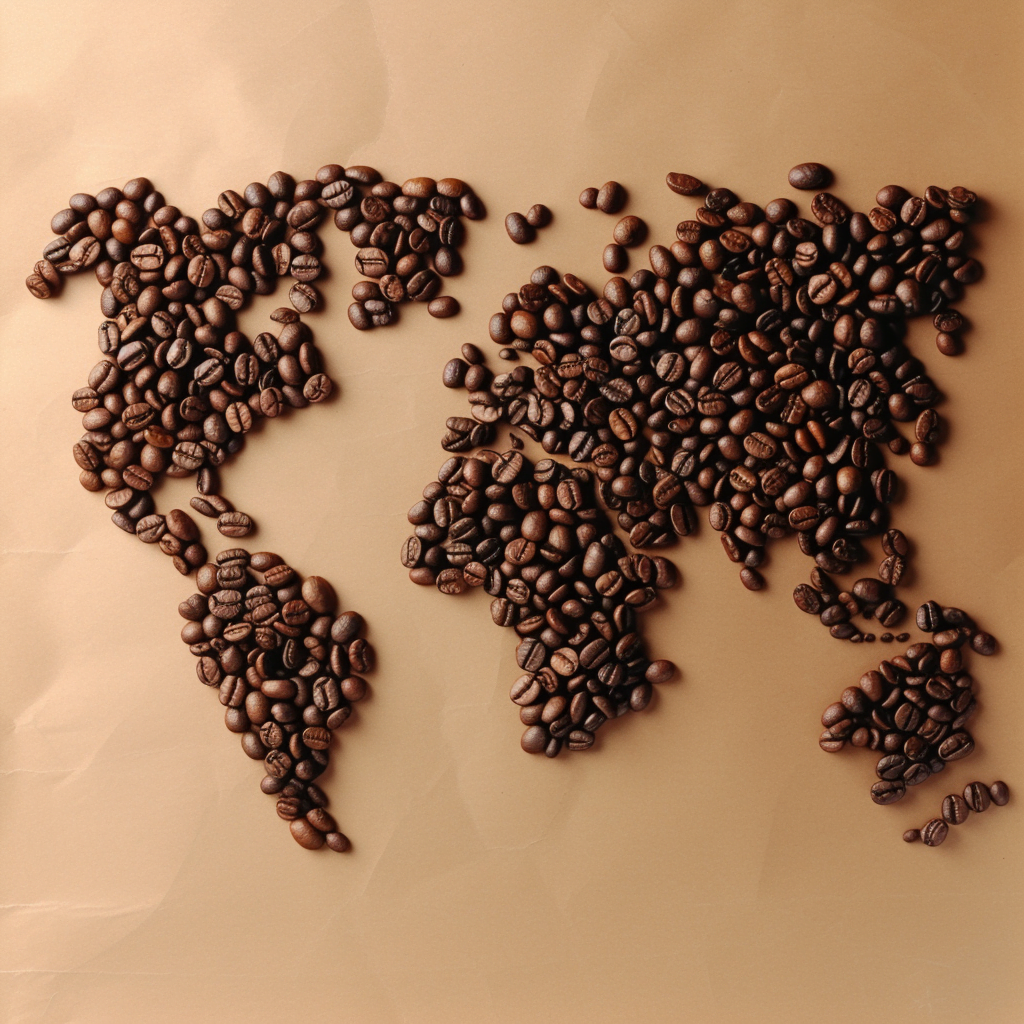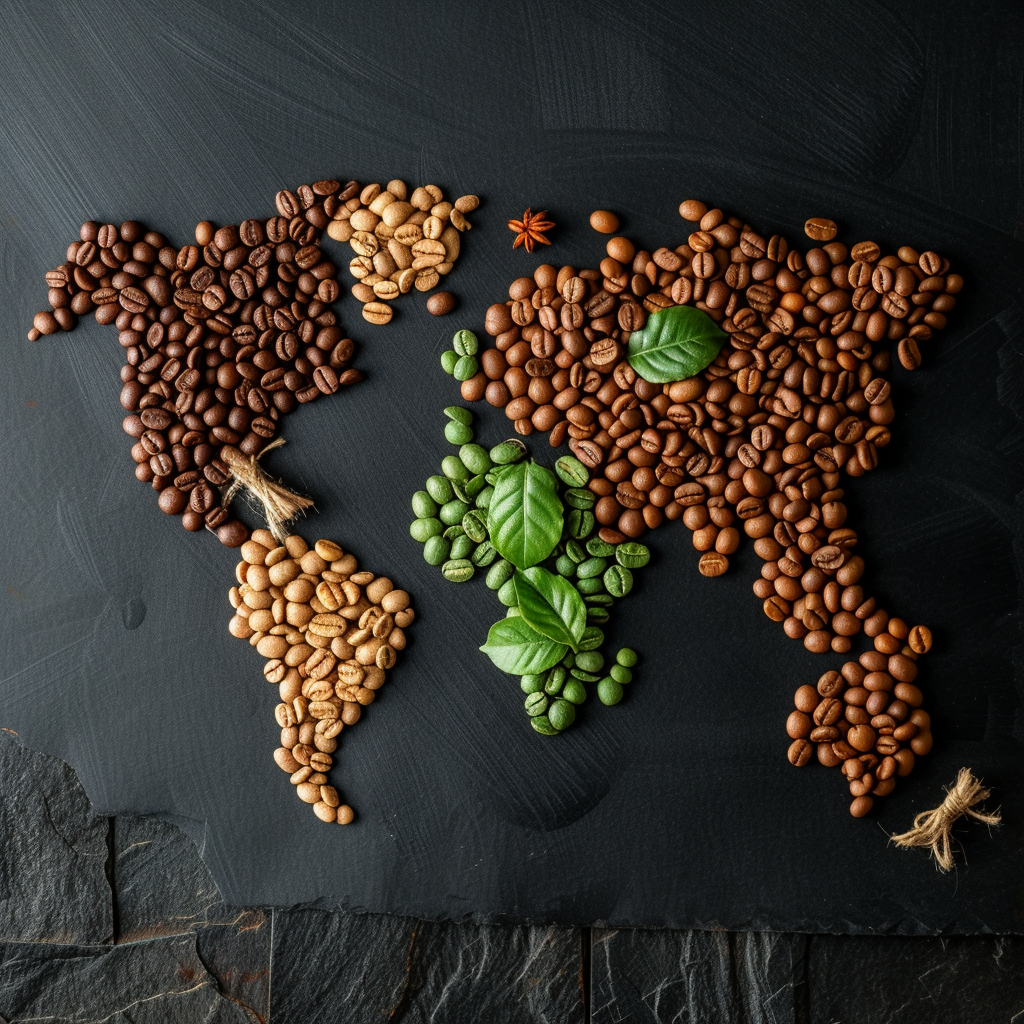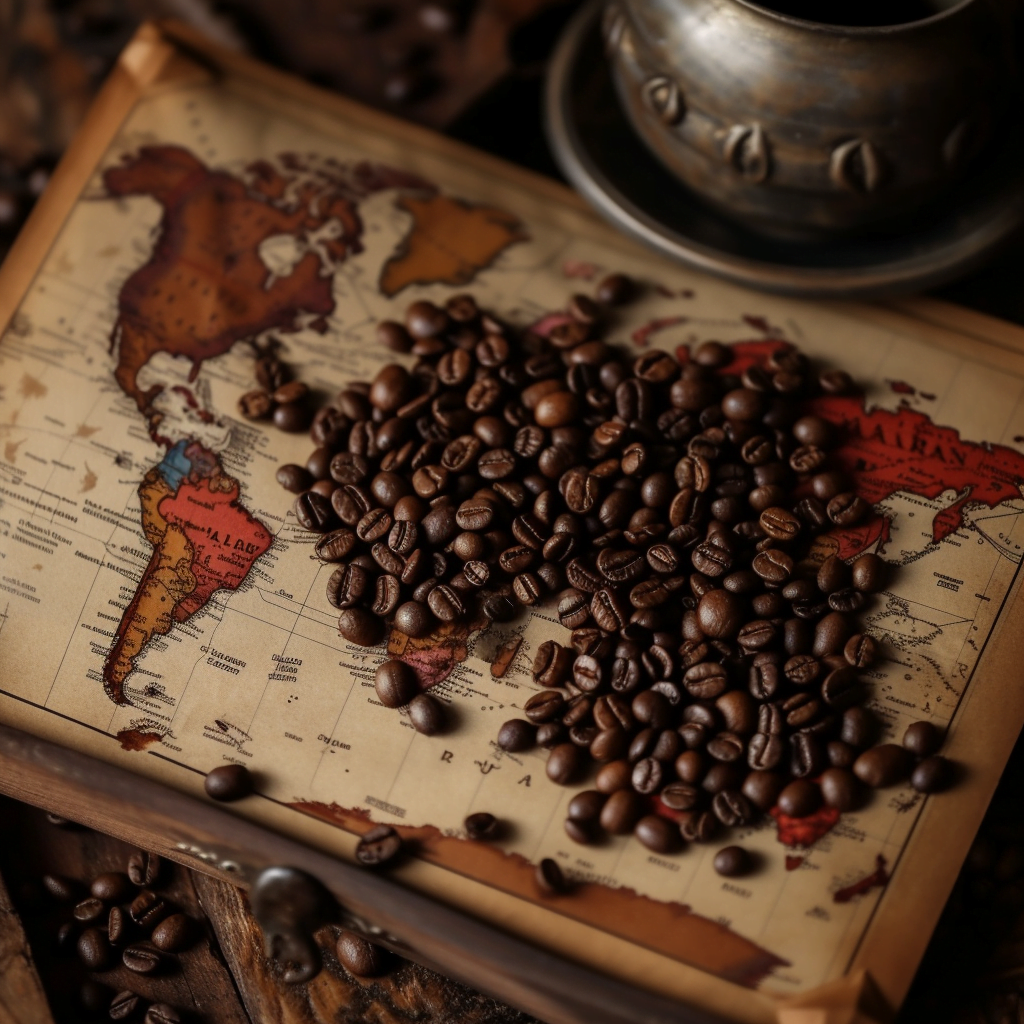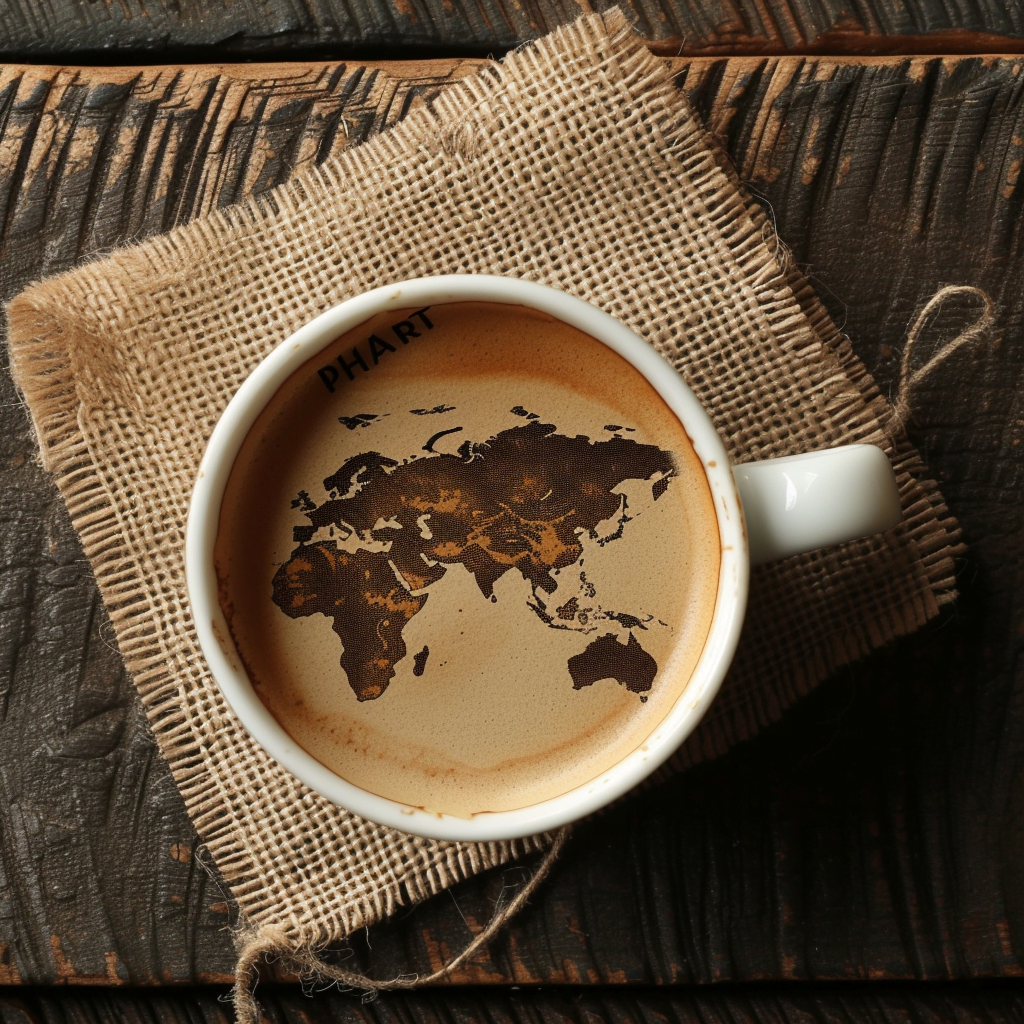Coffee is one of the most beloved and widely consumed beverages globally. Over 2.25 billion cups of coffee are consumed worldwide every day. But which country produces the most coffee to meet this huge demand? The answer may surprise you.
Brazil is the World’s Largest Coffee Producer
Brazil is the world’s dominant coffee producer, responsible for over 40% of total global coffee production. No other country comes close to matching Brazil’s coffee output.
Here are the top coffee producing countries by annual production:
- Brazil – over 3 million metric tons annually, 40% of world production
- Vietnam – 1.7 million tons, 18% of global output
- Colombia – 810,000 tons per year, 9% of total production
- Indonesia – 660,000 tons annually, 7% of world coffee
- Ethiopia – 384,000 tons per year, 4% of total
Several key factors have allowed Brazil to achieve such massive coffee production:
- Ideal climate and geography – The tropical climate and fertile volcanic soil provides perfect coffee growing conditions.
- Massive country size – Brazil is the 5th largest country, giving it vast areas suited for coffee cultivation.
- Coffee culture – Brazil has a long history and cultural affinity for coffee production dating back centuries.
- Advanced farming – Brazil utilizes modern farming techniques and technologies like irrigation to boost yields.
- Government support – Brazil’s government has provided loans, subsidies, and programs to assist coffee producers.
- Export focus – Brazil prioritizes coffee exports, dominating the global coffee trade.
Why Brazilian Coffee Dominates the Market
Brazil revolutionized the international coffee market in the 19th century by adopting advanced production methods and heavily promoting coffee exports. Specific factors that helped Brazil overtake global coffee production include:
- Combination of Robusta and Arabica – Brazil grows both major coffee species, while other countries focus on one variety.
- Massive export capacity – Brazil exports over 30 million 60kg bags of green coffee beans annually.
- Ideal growing conditions – Volcanic soil, elevation, and climate allow larger yields per tree compared to other origins.
- Advanced processing – Brazil utilizes modern washing, drying, and milling techniques to efficiently process high volumes of coffee.
- Market deregulation – Government reforms in the 1990s deregulated coffee trading and exports, catalyzing growth.
Brazil exports over $7 billion worth of coffee each year, making it a vital part of the country’s overall economy. The United States, Germany, Italy, Japan, and Belgium are the top importers of Brazilian coffee.

Coffee Production Methods in Brazil
Coffee production in Brazil involves growing, harvesting, processing, drying, milling, grading, and exporting coffee beans. Here is an in-depth look at Brazil’s main coffee processing methods:
Natural Processing
The natural method is very common in Brazil as it is less labor-intensive compared to washed processing. With the natural method, ripe coffee cherries are dried immediately after harvest with the coffee bean still inside the fruit. The coffee beans are spread out in the sun on patios, raised beds, or mechanical dryers.
The outer skin and fruit flesh slowly dry and shrink around the bean over a period of weeks. Once adequately dried, the outer layers are removed to extract the raw coffee beans which are further dried, milled, graded, and exported.
Natural processing produces a fruity, sweet coffee with good body due to the fruit sugars that are absorbed into the bean during drying. Natural coffees showcase the intrinsic flavors inherited from the variety, soil, and climate. However, natural processing requires close monitoring to prevent over-drying or mold growth on the fruit exterior.
Washed Processing
While less prevalent than natural processing, washed processing is gaining popularity among Brazilian specialty coffee producers. With the washed method, ripe coffee cherries are pulped soon after harvest using machinery to remove the outer skin and sticky mucilage layer.
The raw beans are then fermented in tanks for 12-48 hours which degrades the remaining mucilage. Finally, the beans are thoroughly washed, dried on patios or in mechanical dryers until the moisture content is 11-12%, and then milled, graded, and exported.
Washed processing produces a clean, bright, fruity coffee by removing impediments to the bean’s inherent flavors. However, washed coffees can lack body and the method is more labor, water, and resource intensive compared to natural processing.
Semi-Washed Processing
Semi-washed processing is a hybrid method commonly used in Brazil. With semi-washed processing, ripe coffee cherries are pulped but only partially remove the mucilage surrounding the bean. The beans are then dried with some mucilage still attached before being milled and exported.
Semi-washed coffees have well-balanced flavor profiles with some of the syrupy body from natural drying along with the clean fruit notes achieved through the washing stage. It is an efficient compromise method that utilizes the advantages of both natural and washed processing.
Major Coffee Growing Regions Across Brazil
Brazil has a vast area well-suited to growing coffee across multiple states and regions:
Minas Gerais
Minas Gerais is the largest Arabica coffee producing state, responsible for over 50% of Brazil’s total Arabica output. The mountainous terrain, cool climate, and rich volcanic soil make it ideal for cultivating high quality Arabicas. Coffee production is concentrated in the south of Minas Gerais in areas around Poços de Caldas, São Sebastião do Paraíso, and Guaxupé.
São Paulo
São Paulo state focuses primarily on Robusta coffee production along with sugar cane and oranges. The northwest and southwest regions of São Paulo have the ideal hot, low-elevation environment suited for Robusta coffee trees.
Paraná
Paraná is Brazil’s second largest Arabica coffee producing state after Minas Gerais. The high elevations between 800-1400 meters in the north of Paraná provide excellent conditions for Arabica cultivation.
Bahia
The coastal state of Bahia in northeast Brazil mainly produces Robusta coffee as well as cocoa and tobacco. The hot and humid climate is perfect for Robusta but unsuitable for the more finicky Arabica plants.
Rondônia
Rondônia state in western Brazil is a key coffee producing area focused on Robusta coffee. Rondônia has seen rapid expansion of coffee cultivation since the 1970s into previously undeveloped rainforest areas. This has raised environmental concerns about deforestation driven by the coffee boom.
Espírito Santo
The coastal state of Espírito Santo is known for producing the Conillon variety of Robusta coffee. Espírito Santo provides over 80% of Brazil’s Conillon coffee exports. The lowlands along the Jucu and Doce rivers are the center of Conillon production.

Major Coffee Varieties Grown in Brazil
The two main coffee species cultivated in Brazil are Coffea Arabica (Arabica) and Coffea canephora (Robusta).
Arabica Coffee
Arabica coffee makes up about 70% of Brazil’s overall coffee production. Arabica is a higher quality bean that is more acidic, flavorful, and aromatic compared to Robusta. However, Arabica is also less hardy, more vulnerable to pests and disease, and lower yielding.
The main Arabica varieties grown in Brazil include:
- Bourbon – Originally from Yemen, smooth and sweet. Grown in Minas Gerais.
- Catuaí – Hybrid of Mundo Novo and Caturra, widely grown for high yield.
- Mundo Novo – Hybrid of Typica and Bourbon, excellent cup quality.
- Typica – Oldest Arabica variety, prized for flavor but low yield.
Arabica thrives in the Brazilian highlands where elevation, cool temperatures, and rich soil provide the perfect growing conditions. Minas Gerais, São Paulo, and Paraná are Brazil’s premier Arabica producing states.
Robusta Coffee
Brazil’s Robusta coffee accounts for approximately 30% of national coffee production but is increasing as global Robusta demand rises. Robusta offers much higher yields than Arabica but has a harsher, more bitter flavor profile. It also has more caffeine than Arabica.
Major Robusta coffee varieties in Brazil include:
- Conillon – Unique Robusta variety grown in Espírito Santo state.
- Kouillou – High quality Robusta strain, widely exported.
- Robusta Tropical – Vigorous, high yielding Robusta hybrid.
Robusta thrives in the hot, humid, low-elevation areas in states like Bahia, Rondônia, and Espirito Santo. It is more resistant to pests, disease, and weather fluctuations than the more temperamental Arabica.
Challenges Facing Brazil’s Coffee Sector
Despite Brazil’s coffee dominance, its coffee industry faces several threats and challenges:
Climate Change
Rising temperatures, changing rainfall patterns, increased droughts and floods, and extreme weather events associated with climate change are damaging Brazil’s coffee crops. Drought severely impacted Brazil’s coffee output in 2014 and 2015 leading to spiking coffee prices globally. More variability in weather patterns is expected which will stress coffee trees and make cultivation more challenging.
Pests and Diseases
Pests like the coffee borer beetle and coffee leaf miner insect, and coffee diseases like coffee leaf rust and coffee wilt are persistent threats that can devastate coffee plantations. These coffee-loving pests and diseases are expected to increase and spread due to climate change.
Soil Depletion
Decades of coffee monoculture plantations have exhausted the soil in Brazil’s coffee growing regions. The lack of nutrients in degraded soil leads to lower yields. Heavy use of chemical fertilizers and pesticides have also damaged soil health.
Labor Shortages
Brazil’s coffee harvest relies on seasonal labor during the peak harvest months. But labor shortages during harvest time are becoming more pronounced as younger generations migrate to cities. Without sufficient workers to hand pick ripe cherries, crops suffer.
Low Global Prices
Despite being the world’s largest producer, Brazil is a price taker in the global coffee market. Oversupply and depressed coffee prices in recent years limit profits for Brazilian coffee farmers.
Water Scarcity
Coffee processing and irrigation require significant water usage. But changing rainfall patterns are causing drought in some coffee regions. Competition for scarce water from other sectors adds challenges.
Deforestation
Forest clearing for new coffee plantations, especially robusta expansion in states like Rondônia and Bahia, contributes to deforestation. This raises sustainability concerns about coffee’s impact.

Sustainability Efforts by Brazil’s Coffee Sector
In light of these environmental, climate, and economic challenges, Brazil’s coffee industry is taking steps towards sustainability:
- Diversified agroforestry – Intercropping coffee with shade trees protects coffee plants and provides habitat.
- Water conservation – Using efficient irrigation, recycling wash water, preventing contamination.
- Soil management – Mulching, composting, cover crops to nourish soil and prevent erosion.
- Integrated pest management – Limiting chemical pesticide usage, promoting natural predators.
- Certifications – Growing adoption of certifications like Organic, Fair Trade, Rainforest Alliance.
- Renewable energy – Using solar, biodiesel, biomass to power coffee mills and processing.
- Research – Developing new drought and disease resistant coffee varieties.
- Finance – Providing credit, crop insurance, and training to support smallholder farmers.
However, huge challenges remain and progress towards sustainability has been uneven across Brazil’s massive coffee sector.
The Future of Brazilian Coffee Production
Brazil is likely to maintain its position as the globe’s largest coffee producer and exporter for the foreseeable future. However, climate change impacts along with low global prices and competitive producing countries will create ongoing challenges for Brazil to maintain its commanding market share.
Domestically, Brazil’s medium and large coffee plantations are relatively more resilient. But smallholder coffee farmers with limited resources are highly vulnerable to production threats. Strengthening sustainability practices across all scales of cultivation is crucial for the future viability of Brazil’s coffee sector.
Globally, increasing competition from producers like Vietnam and Colombia could erode Brazil’s market dominance if productivity stagnates. But Brazil’s ideal coffee growing geography and climate are hard to beat. Investments modernizing farms and processing infrastructure will help Brazil defend its coffee crown.
The world’s coffee drinkers can count on Brazil remaining the heavyweight coffee producer keeping their daily caffeine fixes flowing. Yet enjoying the fruits of Brazil’s coffee labor requires that steps are taken to ensure coffee production is sustainable both environmentally and economically into the future.
Conclusion
Brazil has risen to become the dominant coffee producing nation in the world, responsible for over 40% of total global output. An ideal tropical climate, massive land area, established coffee culture, advanced production methods, and favorable trade policies have allowed Brazil to claim the coffee crown. Despite facing challenges like climate change and low prices, Brazil is likely to maintain its position as the globe’s top coffee grower for the foreseeable future. So the next time you sip a delicious cup of coffee, you can thank Brazil for being the world’s coffee king.

